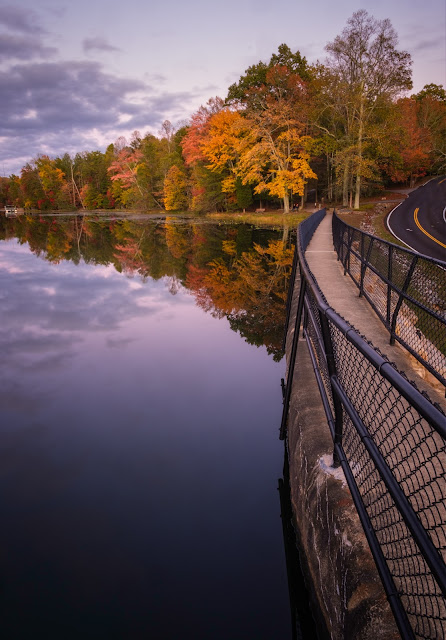To illustrate I have taken the same photo and different shutter speeds. Take a look at these two.
 | ||
| f/22, ISO 160, 14 seconds |
The first photo had a shutter speed of 1/17 of a second, which captured the light chop on the surface. The second photo had a long shutter speed of 14 seconds and turned that light chop into a milky surface. Everything else in the photo was not moving and looks pretty much the same.
Here's another example.
 |
| f/8, ISO 1250, 1/55 second |
 |
| f/22, ISO 160, 1 second |
You may have noticed that the ISO and aperture are also different in each photo. I changed these settings to get the shutter speed I wanted. The lower the ISO number, the longer the shutter speed to get the same exposure. The higher the f-stop number, the longer the shutter speed. If I want t long shutter speed I will start by setting the ISO as low as it can go (160 on my camera). I will then change the aperture until I have a shutter speed I think will give the effect I'm wanting. Because the aperture controls the DOF, I will make sure it is such that I have the DOF I want.
It's hard to see in the example above but the clouds in the 1-second exposure are slightly blurred because they are moving. When the shutter speed is very long and the clouds are moving across the sky you can blur them as well in your photo.
 f/20, ISO 200, 120 seconds |
 f/22, ISO 200, 120 seconds f/22, ISO 200, 120 seconds |
In both photos, you can see the clouds were moving from left to right. You can make a very dramatic photo if you can position yourself so that the clouds are moving toward your camera.
Anything that is not moving in these long exposure photos will be captured sharp with no motion blur. Sometimes even water is still enough that the reflections are crystal clear.
 f
f/22, ISO 250, 7 seconds
Long exposure photography can be a lot of fun. Grab your camera, put it on the tripod, and give it a try. Then let me know how it comes out.










